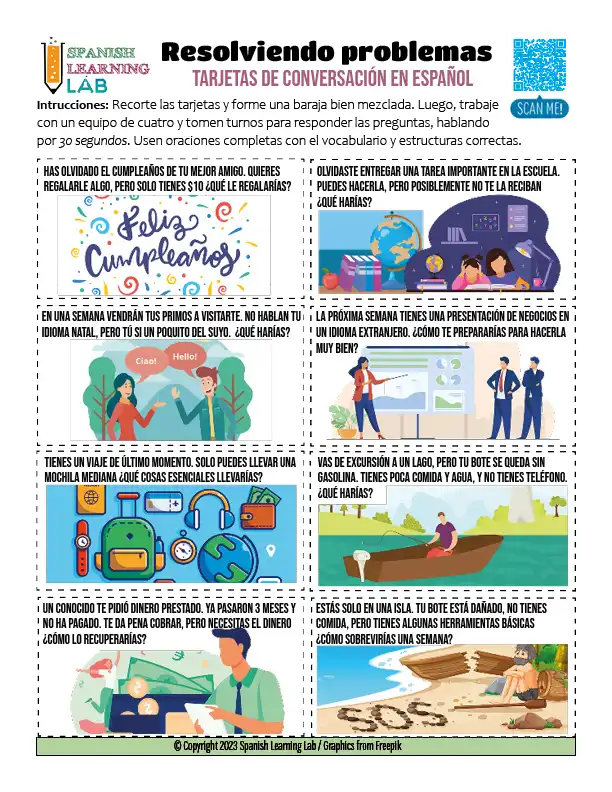¡Hola! Thanks for joining us again. This time, we are sharing a great PDF worksheet including a set of 16 conversation cards in Spanish with interesting scenarios. This material will give students a chance to practice speaking with their friends or classmates by trying to find solutions to common problems in life.
Directions:
Students form groups of four to participate in this speaking activity.
Each group of students gets a copy of the PDF worksheet. First, they must cut out the conversations cards, which include sixteen different scenarios in Spanish about possible problems they could face someday, such as: how they would survive in a risky situation, what they would do if they had a lot of extra money, as well as other decisions that are commonly made as an adult. Students must form a deck with the conversation cards, shuffle it, and take turns to draw a card at a time. After that, they should give a one-minute reply adding real or make-believe information about the things they would do if they found themselves in that specific situation. It’s important that they answer just in Spanish, making a relatively good use of the vocabulary and grammar structures to give a good solutions to the different problems described in the worksheet, otherwise, the card must be returned to the deck. The student who follows these rules and holds the most cards by the end of the game wins.
Spanish worksheet information:
Level: Upper-Intermediate
Skill: Speaking
Related Lessons:
- Expressing Wishes in Spanish: Examples and Listening Practice
- Making Future Plans in Spanish: IR + A + Infinitive

Class activity: Is that the correct solution?
In this speaking activity, students work in groups again, but this time exchanging one of their team members with one from a different group. The new teammate should pick a conversation card, read the problem and then provide his/her best solution to the problem. The other group members should find reasons why that solution may not be the best, despite how good it sounds. This way, each group member should make a follow-up question to the new team member, so that he can defend him/herself with good arguments and provide the best solution possible to the issue in Spanish. Once they have finished, the students go back to their original teams and two other students swap again, and so on.
